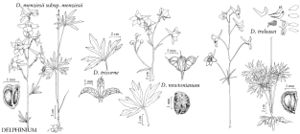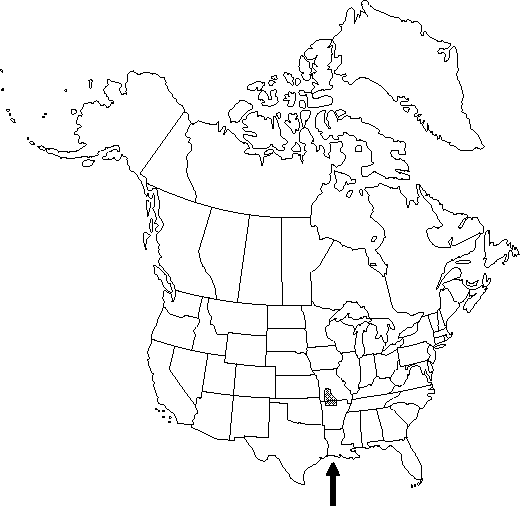Delphinium treleasei
Minnesota Bot. Stud. 2: 444. 1900.
Stems (40-) 60-80 (-110) cm; base reddish, glabrous, glaucous. Leaves mostly basal; basal leaves 3-7 at anthesis; cauline leaves 1-3 at anthesis; petiole 0.5-19 cm. Leaf-blade round to reniform, 0.5-8 × 2-20 cm, glabrous; ultimate lobes 3-35 (-56), 5 or more extending more than 3/5 distance to petiole, width 2-6 mm (basal), 0.5-2 mm (cauline), widest at middle or in proximal 1/2. Inflorescences 5-30 (-56) -flowered; pedicel (1-) 2.5-7 (-11) cm, glabrous; bracteoles 1-7 (-46) mm from flowers, blue or green, awl-shaped, 1.5-4 (-12) mm, glabrous. Flowers: sepals dark bright blue, usually retaining color upon drying, nearly glabrous, lateral sepals spreading, (10-) 12-17 (-20) × 4-8 (-10) mm, spurs straight, ascending ca. 45°, 15-17 mm; lower petal blades ± covering stamens, 5-8 mm, clefts (1-) 3-5 mm; hairs centered, densest above base of cleft, yellow. Fruits 12-18 (-22) mm, 3-4 times longer than wide, glabrous. Seeds unwinged; seed-coat cell surfaces smooth. 2n = 16.
Phenology: Flowering late spring.
Habitat: Open juniper glades on calcareous substrate
Elevation: 250-450 m
Discussion
Delphinium treleasei is locally abundant but extremely limited by microhabitat within its distributional range.
Hybrids between Delphinium treleasei and D. carolinianum subsp. carolinianum are known.
Selected References
None.
Lower Taxa
"widest" is not a number.

